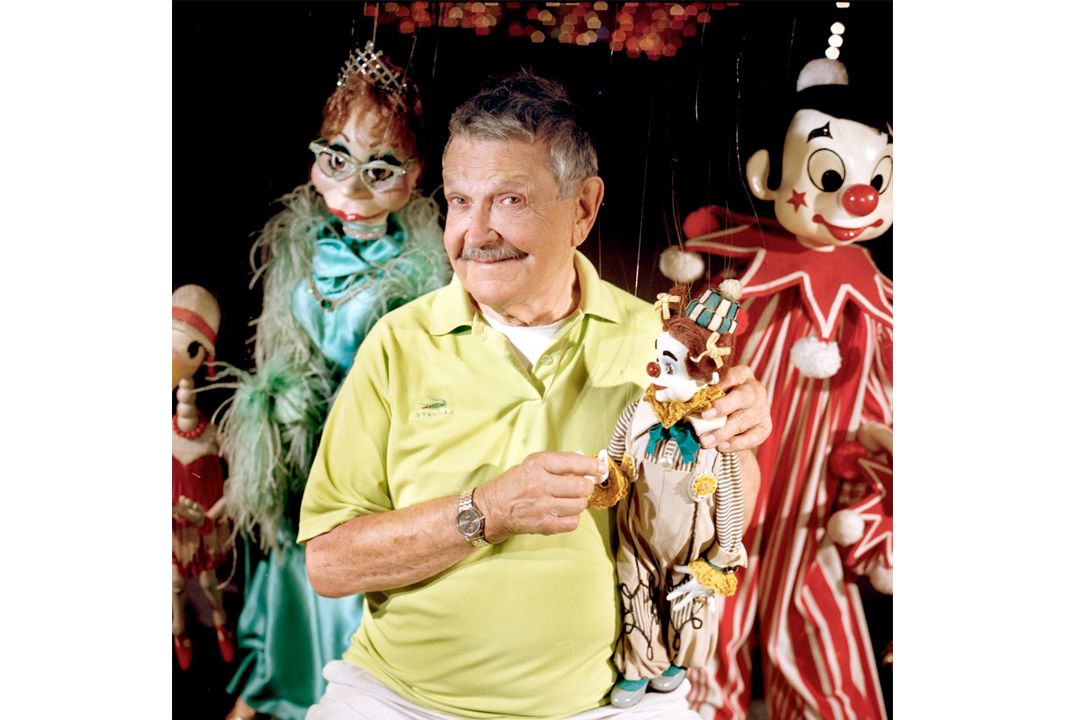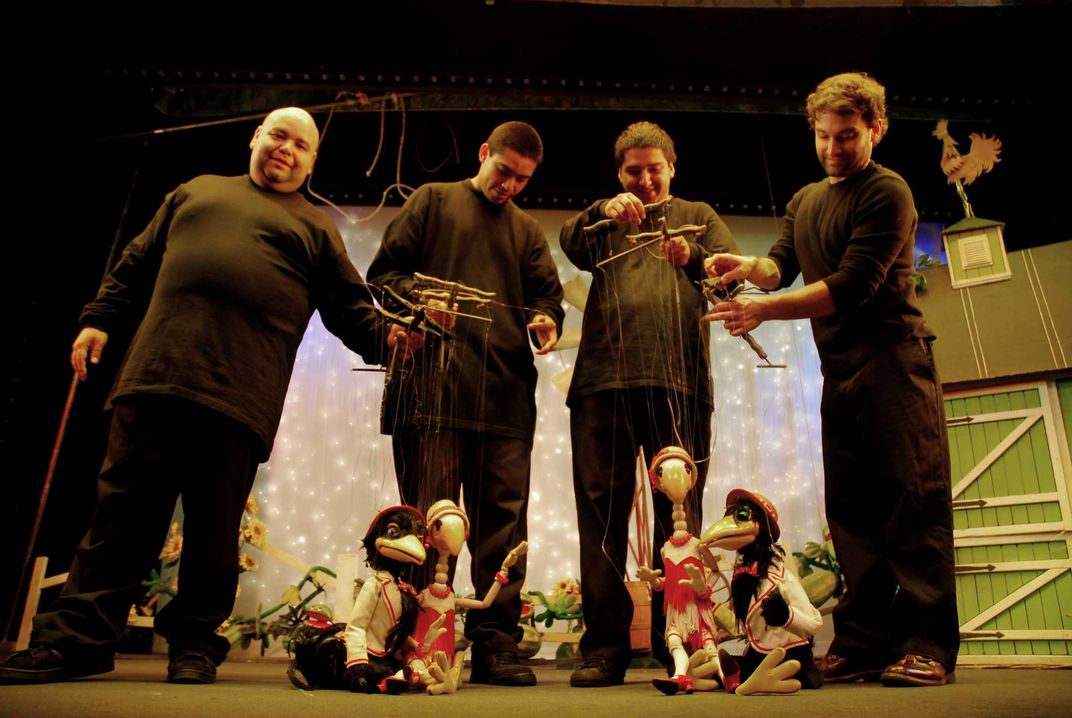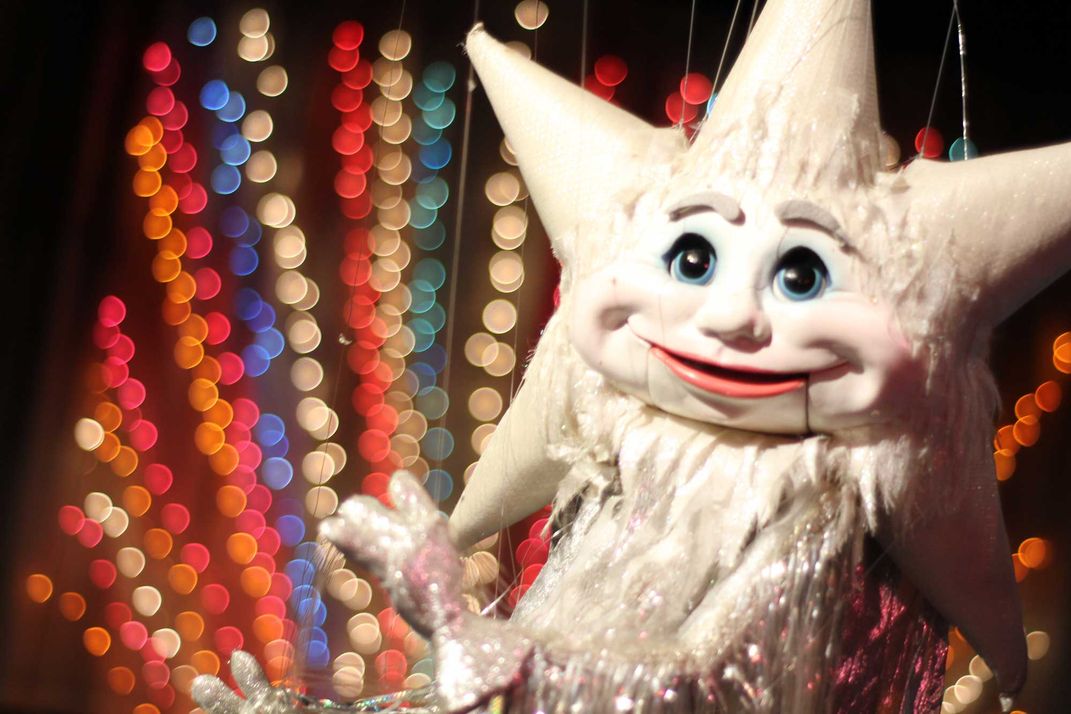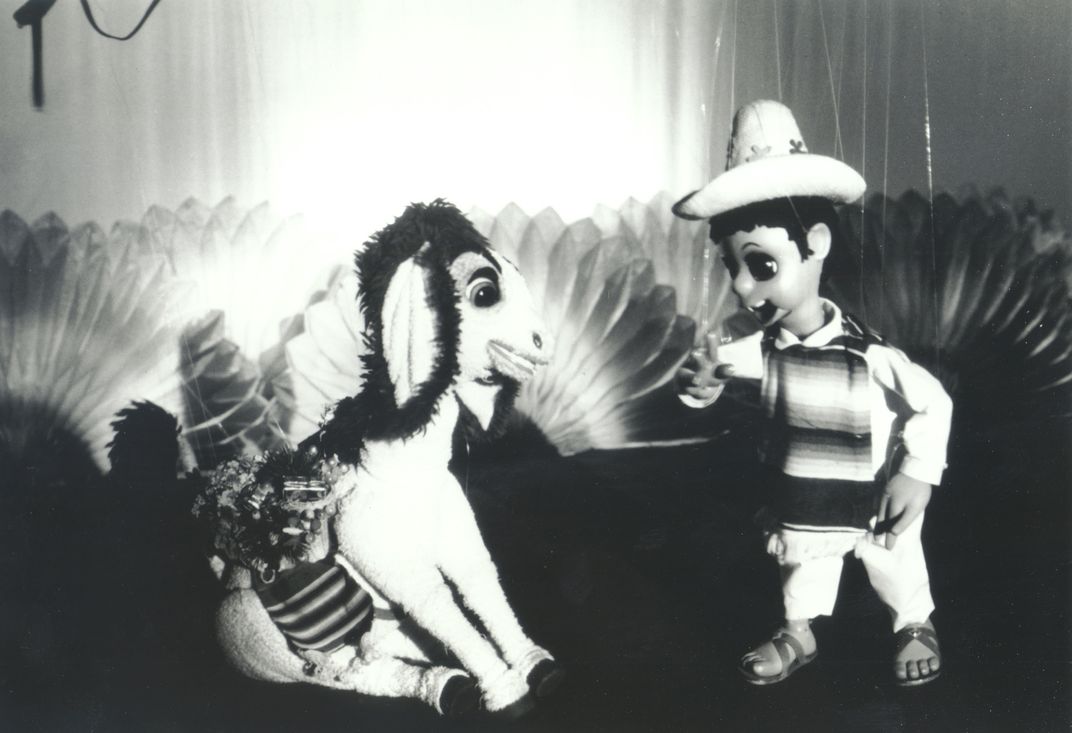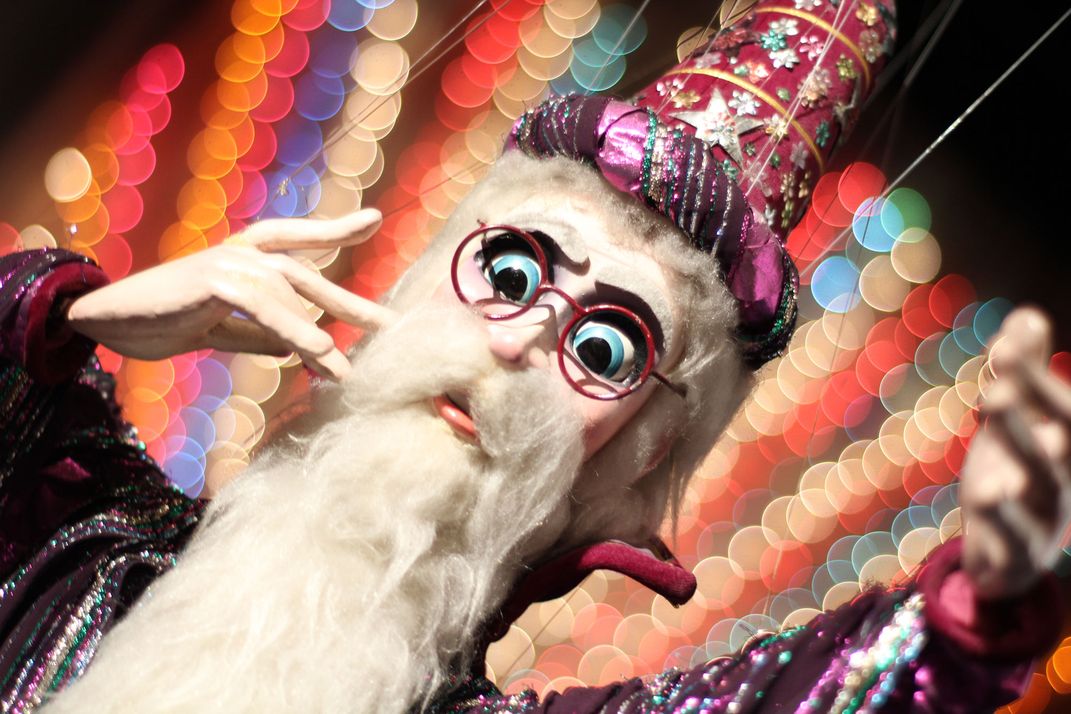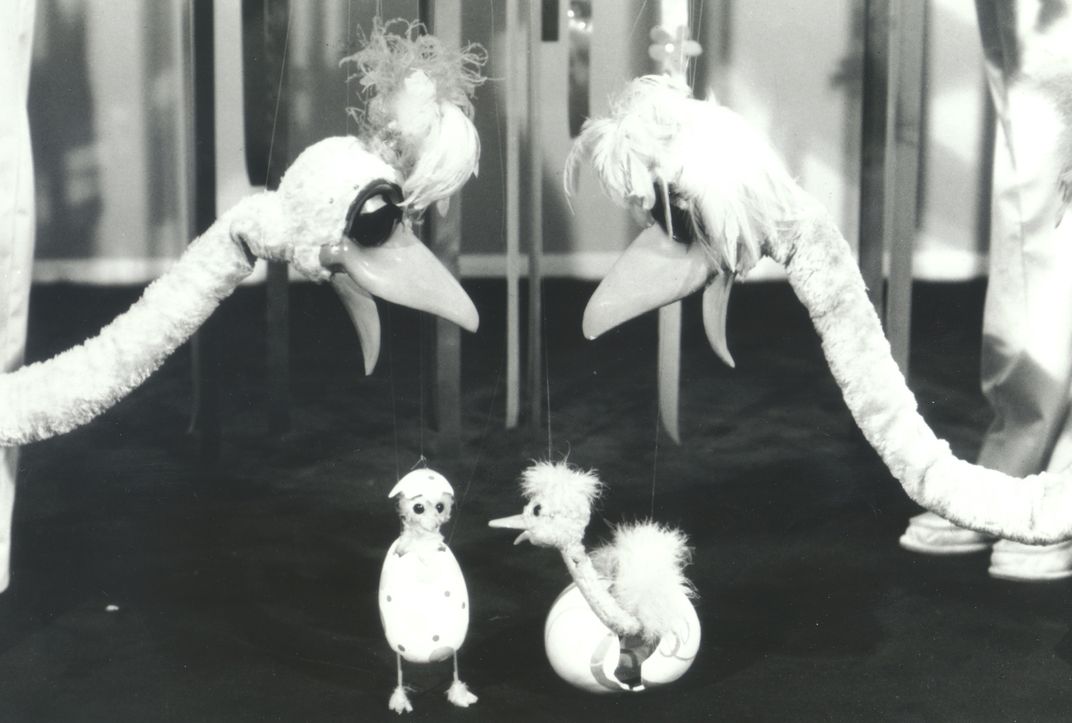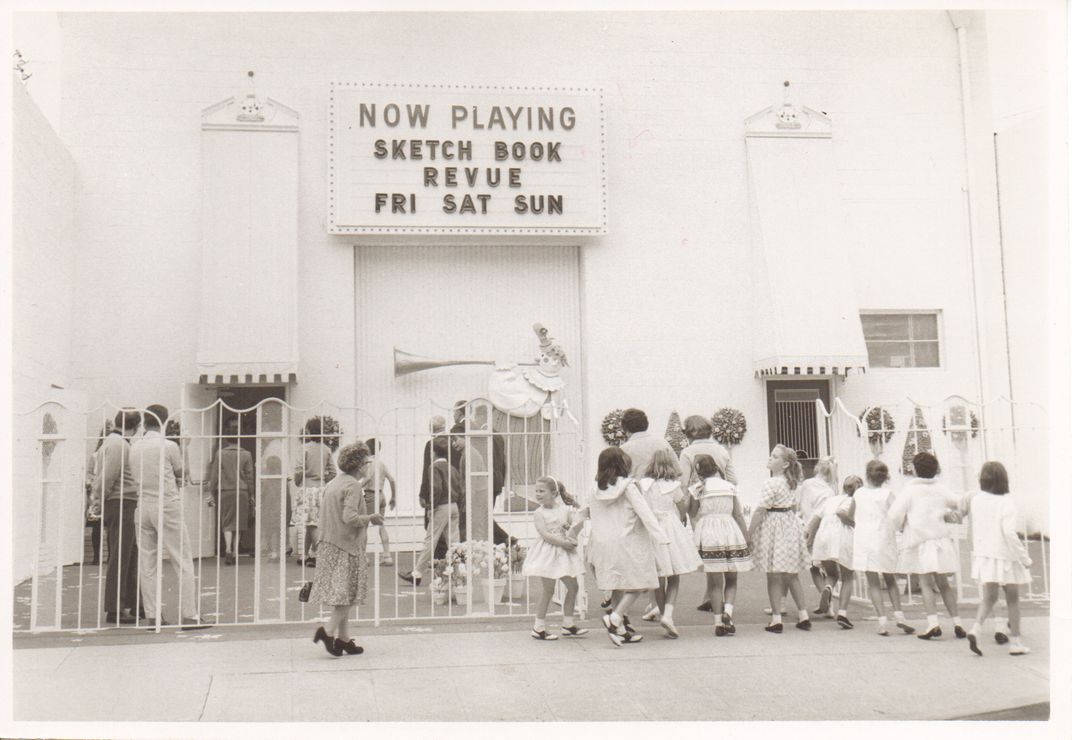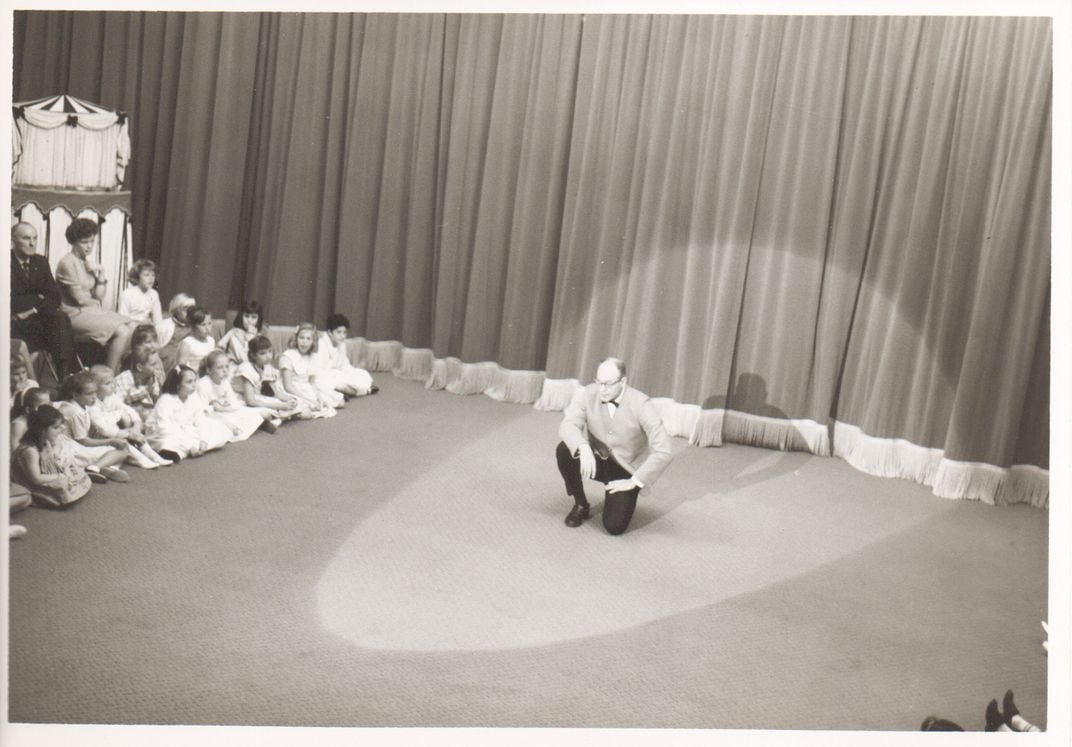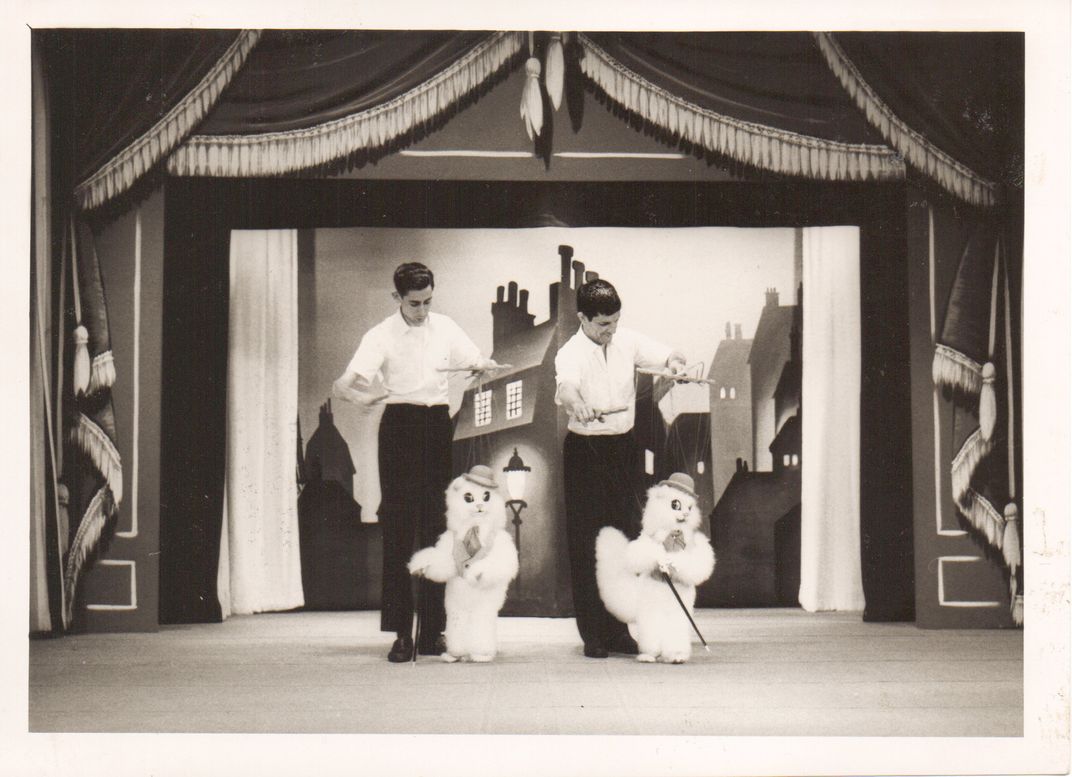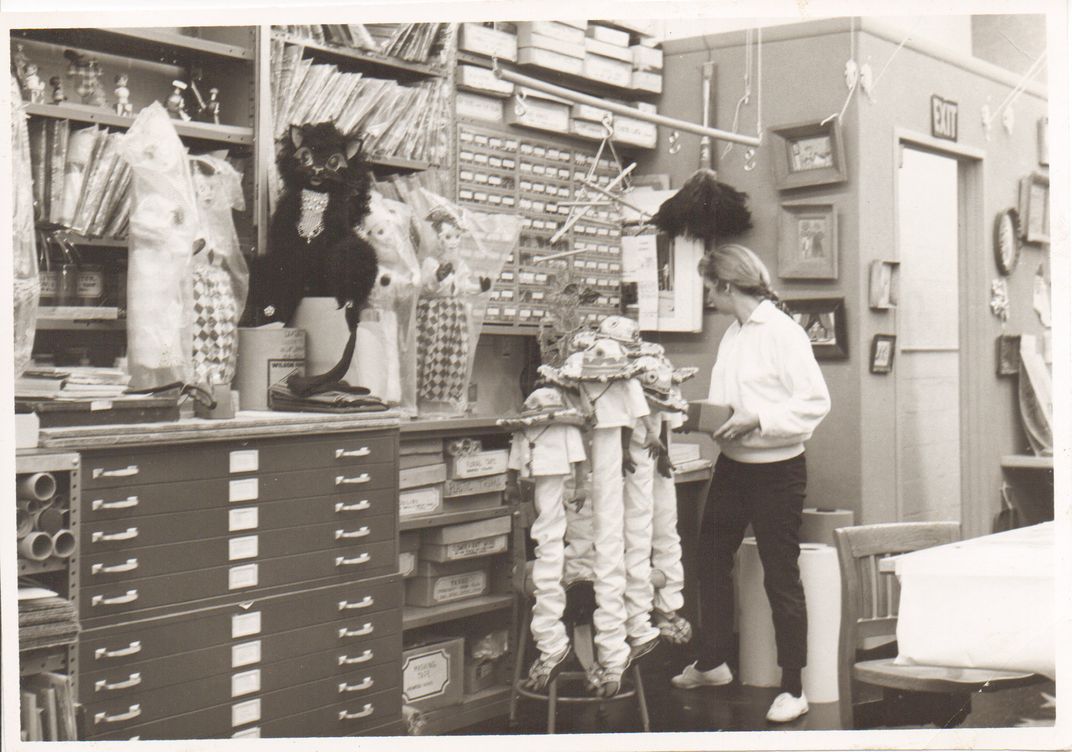The Curtain Hasn’t Closed Quite Yet on America’s Longest-Running Puppet Theater
Though its namesake died last year, the Bob Baker Marionette Theater is still hosting performances for audiences of all ages
There’s a little bit of magic inside the Bob Baker Marionette Theater near downtown Los Angeles. The chandeliers hang from the ceiling, giving off soft light. A bright red curtain protects the surprises that lie behind it. Two smiling clowns stand on boxes, greeting all those who enter. Despite a few chairs, the audience sits mostly on the floor. There is no stage, ensuring little separation between the audience and performers. Soon, the lights fade, the music begins and the red curtain parts, revealing marionettes and strings dancing in near-perfect unison.
Every inch of the longest-running marionette theater in America—every puppet, every choreographed number, every perfectly placed ribbon—is due to one man and his delightful vision. Despite Bob Baker’s death in November, his legacy lives forever in the painted faces of his beloved marionettes. “When you come here, you feel like you step into a different world,” says Alex Evans, the theater’s head puppeteer.
A native Angeleno, Baker was something of a marionette child prodigy. He discovered the art at age eight, buying his first puppet for a dollar at a corner drugstore. Within a few years, he was performing for famed Hollywood director Mervyn LeRoy and the Rockefeller family. While still a student at Hollywood High School, he was designing and selling his own marionettes in the United States and Europe. World War II paused his career when he entered the Army Air Corps, but after being discharged due to illness he went back into the arts, working for George Pal and his revolutionary Puppetoons, who were known for their work in stop-motion animation. By his early 20s, Baker was Pal’s head animator. In the late 1940s, he was an animator and puppet advisor for several studios, including Walt Disney. Throughout his career he worked on 400 films, including Disney’s Bedknobs and Broomsticks, Spielberg’s Close Encounters of the Third Kind and the Elvis Presley movie G.I. Blues.
Despite a busy career, Baker continued designing and constructing his own marionettes. By 1961, it was time to find them a home. Along with his business partner Alton Wood, Baker purchased a spacious building on 1st Street in Los Angeles. The Bob Baker Marionette Theater has been there ever since, hosting shows and encouraging a sense of childlike wonder. After every show, it's traditional for the audience to be invited to the party room for ice cream.
Despite the theater’s 50-plus years in business, its financial situation has always been precarious. The building has faced foreclosure numerous times, including in 1992 and 2008. In 2009, the theater was designated Los Angeles Historic-Cultural Monument #958, but even that, according to LA’s Office of Historic Resources, doesn’t necessarily prevent it from being destroyed. It only means the local government can “delay demolition in order to create opportunities for preservation solutions to emerge.”
In 2012, Baker was forced to sell the building to pay off late mortgage payments and taxes—a sum that had reached nearly $2 million. As Baker explained to The Los Angeles Times, “We've put everything up for sale. The people with the mortgage said if you don't do that, we're going to foreclose.”
The building was eventually sold to property developer Eli Elimelech, who agreed to lease the theater back to Baker until the end of March 2015, then move to a month-to-month lease. Throughout the fall of 2014, Elimelech submitted designs for a five-story mixed-use space encompassing the theater. Then, on November 28, 2014, at the age of ninety, Bob Baker passed away.
Since then, everyone at the theater has been trying to deal with both the uncertain future and the loss of a friend. Alex Evans, who was an intern in 2007 before becoming a puppeteer, remembers Baker as much more than just a boss: “He was like a grandfather to me ... Bob was the most creative guy I’ve ever met.”
Since Baker’s passing, there has been plenty of talk about finding ways to bring more attention—and money—to the theater, through fundraisers, new shows, and even the revival of long-lost masterpieces. One such masterpiece might be LA Ole, first performed during Los Angeles’ centennial in 1981 and last seen on stage in the ’90s. “It was the history of L.A. done through puppets. It was supposedly Bob's masterpiece, but I've never seen it,” said Evans. Asked if the show could see the lights of theater again, Evans explains that they are trying to make that happen, depending on the resources they can muster, notably time and money.
Next door to the theater is the storage warehouse where thousands of Baker’s marionettes live hanging by strings, each handcrafted and delicately painted. There are laughing clowns, dancing mice, menacing dinosaurs and twinkling fairies. Despite Baker’s absence, you can’t help but feel he is still here. Says Evans, “Everything we do down here is in honor of Bob and his vision. He's not gone.”
